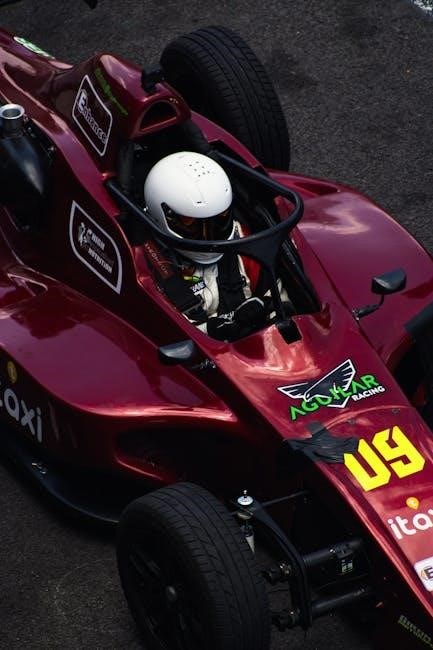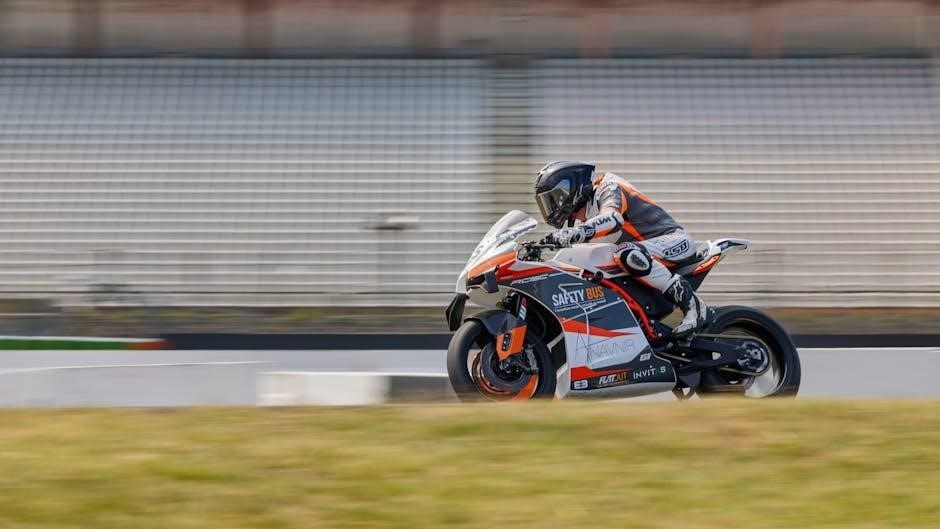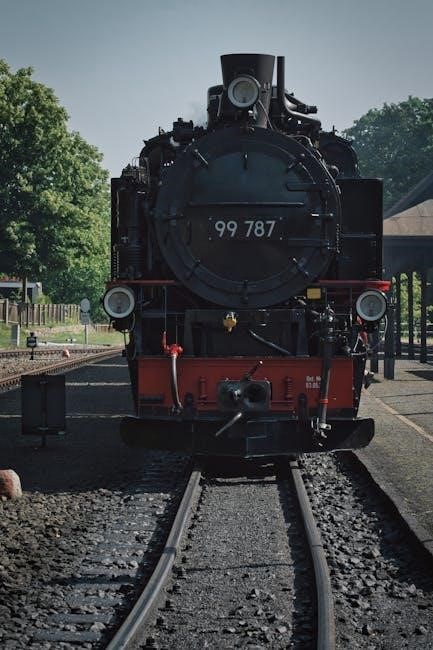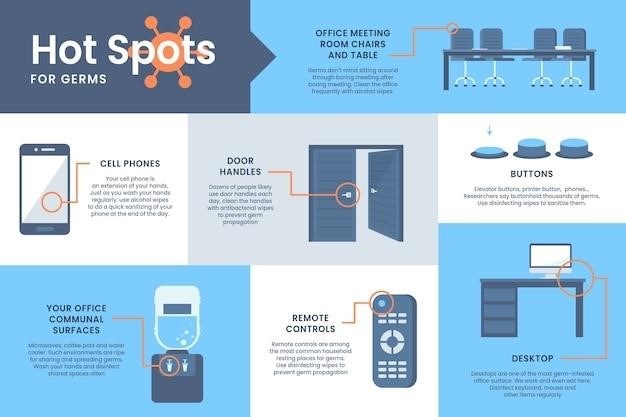A guide track is a preliminary recording used in music production to provide structure and tempo guidance․ It helps musicians stay consistent and aligned during recording sessions․
1․1 Definition and Purpose
A guide track is a reference recording that provides structural and tempo guidance for musicians during production․ It typically includes a vocal or melodic part, along with basic instrumentation, to outline the song’s form and arrangement․ The purpose of a guide track is to ensure consistency in tempo, timing, and overall direction, helping musicians stay aligned and focused during recording sessions․ It serves as a foundational tool for maintaining the song’s integrity and facilitating a smooth production process․
1․2 Importance in Music Production
A guide track is essential for maintaining consistent tempo, timing, and musical direction throughout the production process․ It ensures that all musicians are aligned, reducing errors and enhancing cohesion․ By providing a clear structural reference, guide tracks improve recording efficiency and help artists achieve the desired sound․ They are particularly crucial for genres requiring precise synchronization, such as electronic or dance music, where even slight deviations can disrupt the overall groove and flow of the track․

Key Elements of a Guide Track
A guide track includes tempo, timing, and a clear melodic or vocal part to direct the recording process, ensuring alignment and consistency among all elements․
2․1 Vocal or Melodic Instrument Part
The vocal or melodic instrument part serves as the foundational guide, providing the song’s structure and form․ It is typically recorded with a vocalist or a lead instrument, such as a piano or guitar, to establish the melody and harmony․ This part is crucial for maintaining consistency and ensuring all musicians follow the same musical direction․ It acts as a roadmap, helping performers stay on track during recordings and live performances․
2․2 Tempo and Timing Reference
A guide track provides a clear tempo and timing reference, ensuring consistency throughout the recording process․ This is often achieved using a metronome or click track, which helps musicians stay in sync․ The tempo reference is crucial for maintaining the song’s rhythmic integrity and preventing timing errors․ By having a steady tempo guide, performers can focus on their parts confidently, knowing the foundational rhythm is reliable․ This consistency is essential for achieving a polished and professional final product․
2․3 Basic Arrangement Structure
A guide track outlines the basic arrangement structure of a song, including verses, choruses, bridges, and instrumental sections․ This provides a roadmap for musicians, ensuring everyone understands the song’s flow․ The arrangement structure helps maintain consistency and coherence during recording, allowing artists to focus on their performances․ It also aids in planning transitions and pacing, making the production process more efficient․ A clear structure ensures all elements align, creating a cohesive and professional final product․
2․4 Metronome or Click Track
A metronome or click track is a crucial element in a guide track, providing a consistent tempo reference․ It helps musicians synchronize their performances, ensuring accuracy and timing․ This is especially vital for drummers, who often record first․ The click track serves as a rhythmic backbone, maintaining the song’s pace and preventing tempo drift․ It also aids in aligning overdubs and edits, making the production process smoother․ By including a metronome, the guide track ensures precision and cohesion, particularly in genres requiring tight timing and rhythmic accuracy․

Benefits of Using Guide Tracks
Guide tracks enhance recording efficiency, ensure consistent tempo, provide musical direction, and improve cohesion among musicians, making the production process smoother and more collaborative overall․
3․1 Ensuring Consistent Tempo
A consistent tempo is crucial for cohesive music production․ Guide tracks provide a clear rhythmic reference, ensuring all musicians follow the same beat and timing․ This prevents variations in speed or pacing during recording sessions․ By maintaining a steady tempo, guide tracks help synchronize performances, especially when recording individual parts separately․ They also align with pre-recorded elements, making the production process more efficient․ A consistent tempo ensures the final track sounds polished and professional, as every element stays in perfect sync․ This is particularly vital for genres like electronic and dance music, where rhythm is key․
3․2 Providing Musical Direction
A guide track serves as a roadmap for musicians, offering clear musical direction․ It outlines the song’s structure, dynamics, and emotional core, ensuring everyone follows the same vision․ By including key elements like melody, tempo, and arrangement, guide tracks help musicians understand their roles and how their parts fit into the overall composition․ This clarity enables artists to focus on their performances while maintaining the song’s intended feel and direction․ It also aligns with pre-recorded elements, streamlining the production process and enhancing creativity․
3․3 Enhancing Cohesion Among Musicians
A guide track fosters unity among musicians by providing a shared foundation․ It ensures everyone is aligned with the song’s tempo, structure, and arrangement, reducing confusion and miscommunication․ This consistency allows each musician to understand their role within the larger composition, creating a cohesive performance; By having a clear reference, musicians can focus on their parts while staying in sync with others, resulting in a more polished and harmonious final product․
3․4 Improving Recording Efficiency

A guide track significantly enhances recording efficiency by reducing setup time and minimizing retakes․ With a clear tempo and structure, musicians can record their parts confidently, knowing the foundation is already in place․ This streamlined process allows engineers to focus on capturing high-quality performances rather than correcting timing or structural issues․ Additionally, having a guide track ensures that all elements align seamlessly, making the overall production process faster and more productive for everyone involved․

Creating a Guide Track
Creating a guide track involves recording a simple version of the song, often with vocals and a primary instrument, to provide structure and tempo for musicians․
4․1 Planning the Guide Track
Planning a guide track involves defining the song’s structure, tempo, and key elements․ Start by outlining the arrangement, including verses, choruses, and bridges․ Determine the tempo and time signature to ensure consistency․ Identify the primary melodic instrument or vocal part that will guide the recording․ Consider the overall feel and groove to maintain musical cohesion․ This step ensures the guide track aligns with the final production vision, making the recording process smoother and more efficient for all musicians involved․ Proper planning also helps in maintaining a clear direction during the creation process․
4․2 Choosing the Right Instrument
Selecting the right instrument for a guide track is crucial for clarity and direction․ Opt for an instrument with a strong, clear tone, such as a piano, guitar, or synth․ Ensure it can carry the melody and rhythm effectively․ The choice should align with the song’s genre and mood, providing a solid foundation for other musicians to follow․ Virtual instruments and plugins can also be used for flexibility and professional polish․ The instrument should be easily audible and capable of conveying the track’s dynamics and emotional impact without overpowering other elements․
4․3 Recording Techniques
When recording a guide track, focus on clarity and precision․ Use a metronome or click track to maintain consistent tempo․ Record in a quiet environment with minimal effects to ensure the track is clean and easy to follow․ Virtual instruments and MIDI can enhance flexibility, while live recordings provide organic feel․ Keep the arrangement simple, emphasizing the core melody and rhythm․ Use reference tracks for inspiration and ensure the guide track aligns with the song’s intended structure and emotional direction․ This helps musicians stay focused and deliver polished performances․
4․4 Finalizing the Guide Track
Finalizing a guide track involves ensuring clarity and consistency․ Review the track for precise tempo and timing, and verify that the melody or instrument part is clear․ Adjust levels to maintain a balanced mix, and remove any unnecessary elements․ Export the track in a format suitable for sharing, such as WAV or MP3․ Ensure the arrangement is well-organized, making it easy for musicians to follow․ Double-check that the guide track aligns with the song’s intended structure and emotional direction before sharing it with the team․

Guide Tracks in Different Music Genres
Guide tracks are essential across genres, from Pop and Rock to Electronic and Hip-Hop․ They adapt to each style, ensuring tempo consistency and structural clarity for musicians․
5․1 Pop and Rock Music
In Pop and Rock, guide tracks often feature a prominent vocal or instrumental melody to guide the band․ They provide a clear tempo and structure, ensuring consistency during recording․ For drummers and bassists, these tracks act as a foundation, while guitarists and keyboardists follow the harmonic progression․ The guide track helps maintain energy and pacing, especially in high-energy Rock songs․ It also allows for creative improvisation while keeping the overall arrangement cohesive․ This approach is essential for achieving a polished and professional sound in these genres․
5․2 Electronic and Dance Music
In Electronic and Dance Music, guide tracks are essential for maintaining rhythm and structure․ They often feature a prominent drum machine or synth pattern to guide the production․ These tracks help producers align loops, samples, and effects seamlessly․ Tempo consistency is crucial, and guide tracks ensure the beat remains steady․ They also assist in building energy and transitions, typical in EDM․ By providing a clear framework, guide tracks enable artists to experiment with layers and textures while keeping the track cohesive and danceable, which is vital for the genre’s dynamic nature․
5․3 Hip-Hop and R&B
In Hip-Hop and R&B, guide tracks are crucial for maintaining rhythmic accuracy and melodic alignment․ They often feature a clear drum pattern or bassline to anchor the production․ These tracks help artists focus on lyrical delivery and harmonic structure․ For R&B, guide tracks may emphasize soulful melodies, while in Hip-Hop, they ensure tight synchronization between beats and rhymes․ They also facilitate smooth transitions between verses, choruses, and bridges․ By providing a steady foundation, guide tracks enable producers to layer intricate sounds while preserving the track’s groove and emotional depth, essential for these genres’ expressive nature․

Tools and Software for Guide Tracks
Digital Audio Workstations (DAWs) like Logic Pro X and Ableton Live are essential for creating guide tracks․ Virtual instruments and plugins add depth and precision, while specific guide track plugins streamline the process, ensuring high-quality results efficiently․
6․1 Digital Audio Workstations (DAWs)
Digital Audio Workstations (DAWs) are essential tools for creating and refining guide tracks․ They provide a platform to record, edit, and arrange audio and MIDI files with precision․ Popular DAWs like Logic Pro X, Ableton Live, and Pro Tools offer features such as tempo matching, time-stretching, and synchronization, making it easier to craft accurate guide tracks․ These programs also support VST plugins, enabling producers to enhance the quality and depth of their tracks․ By streamlining the production process, DAWs are indispensable for modern music creation․
6․2 Virtual Instruments and Plugins
Virtual instruments and plugins are crucial for enhancing guide tracks․ They allow producers to create realistic sounds without physical instruments, adding depth and complexity․ Plugins like virtual drum machines, synthesizers, and effects processors can refine the track’s quality․ For example, a virtual piano or guitar can provide a clear melodic reference․ These tools also enable tempo-synced effects, ensuring consistency․ By integrating virtual instruments and plugins, producers can craft guide tracks that are both professional and inspiring, aiding musicians in delivering their best performances during recording sessions․ These tools are indispensable for modern music production efficiency․
6․3 Guide Track Plugins

Guide track plugins are specialized tools designed to streamline the creation of live cue and slate tracks․ These plugins offer speed, flexibility, and professional polish, making it easier to produce high-quality guide tracks․ They often include features like quick editing, tempo synchronization, and seamless integration with DAWs․ By automating key tasks, guide track plugins save time and ensure consistency․ They are particularly useful for live performances and studio recordings, providing clear musical cues and enhancing overall production efficiency․ These tools are essential for producers aiming to create precise and professional guide tracks effortlessly․

Best Practices for Guide Tracks
Best practices for guide tracks involve simplicity, clear communication, and high-quality audio․ Ensure consistency, collaborate with musicians, and use reference tracks for optimal results․
7․1 Keeping It Simple
Keeping a guide track simple is essential to avoid overwhelming musicians․ Use a clear, stripped-back version of the song, focusing on the core melody or vocal line․ Avoid overproducing, as the goal is to provide a clear reference without distractions․ A simple guide track ensures everyone stays focused on the song’s structure and tempo, making it easier to follow and adapt during recording sessions․ This approach also allows for more flexibility and creativity among the performers․
7․2 Ensuring High Quality
A high-quality guide track is crucial for clear communication and consistency․ It should feature precise timing, clean audio, and balanced levels to avoid distortion or confusion․ Use professional-grade instruments or virtual plugins to ensure clarity, especially in the melody or vocals․ A well-recorded guide track helps musicians perform accurately and confidently, reducing errors and the need for retakes․ Avoid overly complex arrangements that might distract from the main elements․ The goal is to create a polished yet straightforward reference that supports the recording process effectively․
7․3 Collaborating with Musicians
Collaboration with musicians is key to a successful guide track․ Share the track early to ensure everyone understands the arrangement, tempo, and dynamics․ This helps align expectations and reduces errors during recording․ Regular communication fosters a cohesive performance, as each musician can adapt their parts accordingly․ Providing a clear, high-quality guide track empowers artists to deliver their best work, creating a unified and polished final product․ Open dialogue ensures all elements blend seamlessly, enhancing the overall musicality of the track․
7․4 Using Reference Tracks
Reference tracks are crucial for maintaining balance and consistency in a guide track․ They provide a professional benchmark, helping producers and musicians align their work with industry standards․ For instance, a reference track can guide the kick drum level, ensuring it sits appropriately in the mix․ This practice enhances clarity and cohesion, especially in genres like techno, where percussion levels are critical․ By referencing professional tracks, musicians can achieve a polished sound and stay inspired during the production process, ensuring the guide track meets its intended purpose effectively․

The Future of Guide Tracks
The future of guide tracks lies in advanced AI and automation, enabling real-time adjustments and personalized track generation, ensuring high-quality and dynamic music production experiences․
8․1 Technological Advancements
Technological advancements are revolutionizing guide tracks, offering enhanced precision and creativity․ Virtual instruments and plugins now enable producers to craft detailed, dynamic guide tracks with ease․ High-quality digital audio workstations (DAWs) provide seamless integration, allowing real-time adjustments․ AI-driven tools are emerging, capable of generating adaptive guide tracks that align with a project’s specific needs․ These innovations not only streamline the recording process but also empower musicians to focus on artistic expression, ensuring guide tracks remain a cornerstone of modern music production․
8․2 AI and Automation
AI and automation are transforming guide tracks by enabling dynamic, adaptive tools․ AI algorithms can analyze reference tracks to suggest arrangements or tempo adjustments․ Automated systems now generate guide tracks tailored to specific genres or moods․ These tools enhance creativity while maintaining precision, allowing producers to focus on artistic elements․ Automation also streamlines the recording process, ensuring consistency and efficiency․ As AI evolves, guide tracks will become even more intelligent, offering unparalleled flexibility for musicians and producers in modern music production․
8․3 Evolving Role in Music Production
The role of guide tracks in music production is expanding rapidly․ They are now integral to collaborative workflows, enabling remote artists to align their performances seamlessly․ With advancements in technology, guide tracks are being used not only for tempo and structure but also for creative inspiration․ Producers leverage them to experiment with arrangements and melodies during the early stages of production․ This evolution highlights the growing importance of guide tracks as versatile tools that enhance both efficiency and creativity in the music-making process․


